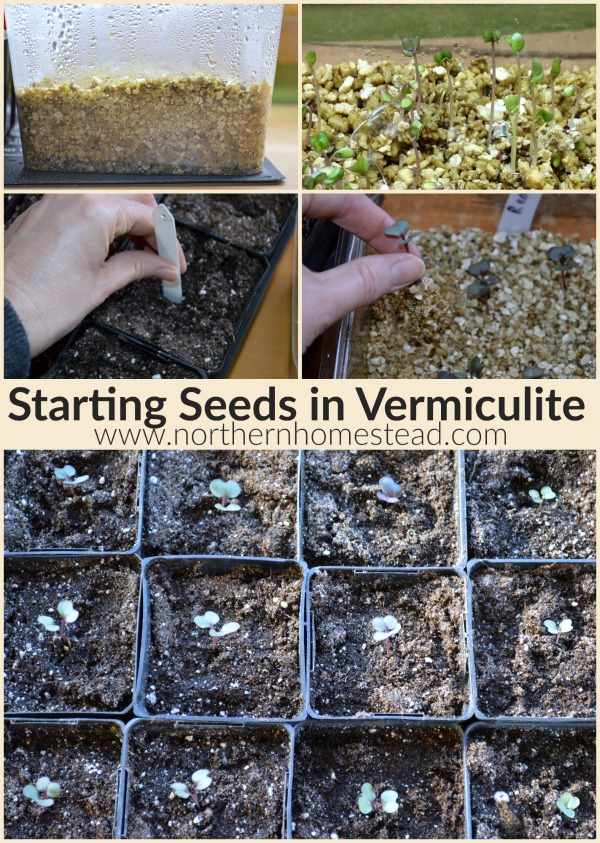
Starting seeds in vermiculite is one of many great tips from the All New Square Foot Gardening book. It is a good method that can be used to start indoor seedlings grown in soil, outdoor planting, and hydroponics. Try it and let us know if you like it.
There’s no one-size-fits-all approach to how to start seeds, you can experiment with several different methods and see what works for you. We already covered how to start seeds indoors in soil and for hydroponic growing, as well as how to start tomatoes from seeds. You can combine starting seeds in vermiculite with all the other methods by using it as a first step.
What is vermiculite anyways?
Vermiculite is a micro rock mined out of the ground. The rock is ground up and heated until it explodes just like popcorn. It can hold a tremendous amount of water while still remaining airy, creating an ideal environment for seeds to sprout. It is used in the horticultural industry to improve soil aeration.
Vermiculite in itself does not contain any fertilizer, nor can it give the plants nutrients to grow. It only holds moisture and with its lightness is ideal for seed starting.
Instead of buying expensive seed starter soil, use vermiculate. When the seedlings are pricked out, add the rest to the potting soil mix to improve its lightness and moisture-holding capacities. A win-win situation.
Why start seeds in vermiculite?
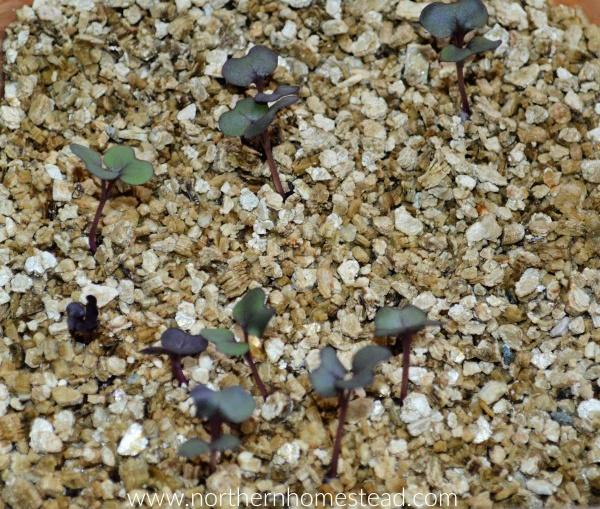
The vermiculite is just the medium to start seedlings in that might be new to you, but the method is as old as seed starting is. You start seeds in a container and prick out (transplant) the healthiest seedlings.
Starting seeds in vermiculite is first of all easy, and seeds germinate fast. The transplanting is also uncomplicated because the vermiculate is so lightweight.
Since there is no soil involved, the process is clean. Also, a great project to do with children.
Can all seeds be started in vermiculite?
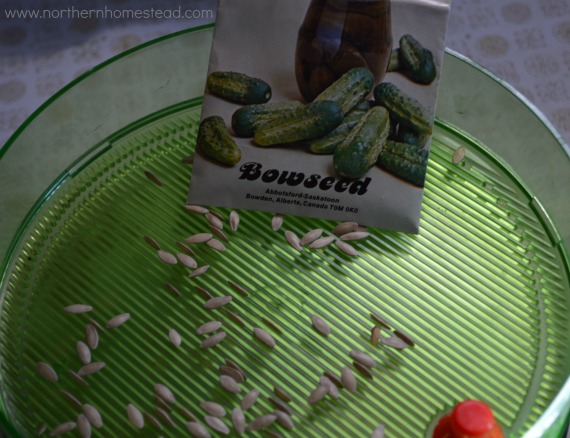
Apparently yes, however personally I would not start any seeds from the cucumber and squash family in vermiculite. Those plants are very sensitive and do not like it if the roots are being disturbed. You can sprout them and plant them directly into the soil.
Starting seeds in vermiculate is a great method for cabbage, tomatoes, peppers, lettuce, and more.
What container to use?
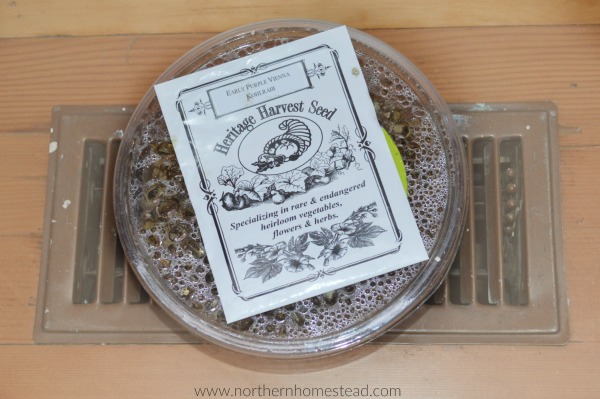
Recycled plastic containers, preferably with a lid, work great. You can see in the picture how much moisture is in the container and also the sprouting process.
Water the vermiculite as much as it can take; you do not want the water to sit in the bottom of the container. Moist vermiculite changes color and gets darker, this way you can tell if it is moist or not.
You can also cut a small hole in the bottom of the container filled with vermiculite and set it in a shallow bowl with water and let the vermiculite soak it up until you see that no more water is being taken up. If the container does not have a lid, cover it with plastic wrap.
How to plant seeds in vermiculite?
Below is a little wordless video to show you the simple process. If you can’t see the video turn off the add blocker and you will be able to watch it.
Sprinkle the seeds on top of the moist vermiculite, cover them with a thin layer of vermiculite, and then spray with water. Cover the container to keep the moisture in. If you are starting heat-loving plants, set the container on top of a heating vent, heat mat, or any place warm.
As soon as you see that the seeds have sprouted, take the cover off and transfer the container to a bright location.
Prick out (transplant) the healthiest seedlings
When the seedlings have their first leaves use a chopstick or a pencil to loosen the soil if needed, and gently lift it out of the seedlings. It should come out easily with all the roots attached, that’s the beauty of starting seeds in vermiculite.
Transfer the seedlings to containers filled with good potting soil or directly into your garden if the weather is already right.
Water the little plants and let them grow into mature and healthy plants.
Happy gardening!
We invite you to subscribe to Northern Homestead and follow us on Instagram, Facebook, or Pinterest for the latest updates.


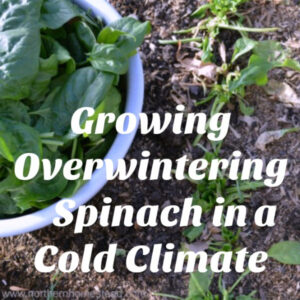
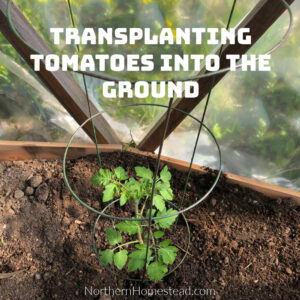
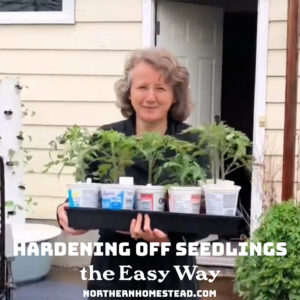
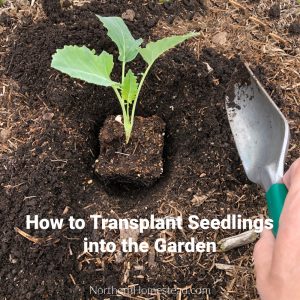
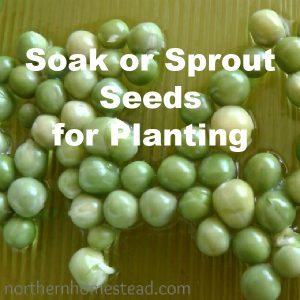
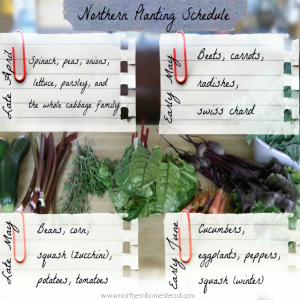

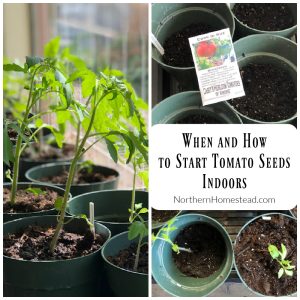
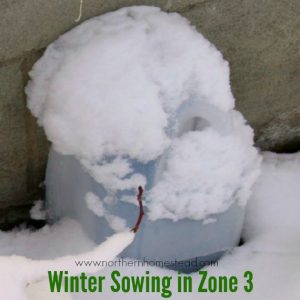


Good Morning Anna, Here’s a couple ideas that might help you: Used Parmessian Cheese or Herb containers for shaking your vermiculite over your seeds. I use the Parmesan Cheese container(s) when applying DE (Diatomaceous Earth) and I keep a few small garden rocks in it to keep it loose, also works great with Epsom salts, Dolomitic Limestone and other soil amending items.
Instead of using a screwdriver to put holes in your yogurt containers try using a heated wood burner, it’s like cutting through butter.
Get a set of old white Venetian blinds. I recycle the metal upper-inner track rod, the plastic open & close pole, braided cording for garden plant tying and the metal slats to cut down for plant markers. (Note) When starting my seeds in the garden with milk gallon jugs with the bottoms removed; I put a hole in the cap and run the Venetian blind open & close pole through the cap into the ground to anchor the jug. Have a great day!
Thank you Cheri for all the great tips.
Hi Anna, I will have to try this. I often use sunshine mix to start my seeds (because I Never remember to bring a few buckets of compost up to the house before the snow flies). Thanks!
I know, it is hard to remember all the things that need to be done before the snow comes.
Just wondering … by “first leaves” do you mean the leaves that appear when the seeds first germinate or do you mean the first set of leaves that come next? Thanks!
That’s a good question. I do mean first leaves that appear, not true lives.
Hi! I’m very new to gardening. Should I be misting these with water daily while waiting for seeds to sprout?
If you cover the tray, it should be fine till germination. As a very new gardener, I would recommend buying seedlings and learning the main gardening skills first, before learning to start seeds indoors. No skill is learned overnight, be patient and gracious with yourself. Happy gardening!
I just received this in my email and so glad I read it again. I was just getting ready to head out to buy seed starting materials. You saved me some money. Thank you!
Aww, love it when minds are joined and things come just in time. Happy planting!
Thank you! Just wish it would warm up so I can transplant out.
Sounds like a great way to start seeds so thanks for sharing. The picture shown of Vermiculite is labeled Professional Grade. Is that the fine or coarse vermiculite? I am guessing that it’s cheaper to buy vermiculite by cubic feet rather than by the quarts and was wondering if you can recommend an inexpensive source for it.
You can get vermiculate for horticultural use in bigger bags. Home Depot has 4 cube bags and garden centers also carry big bags. However, you probably have to call ahead or order online for bigger sizes. Here is a picture of a bag we got in a garden center in Edmonton. It’s a while ago, so the prices probably have changed. But worth looking for.